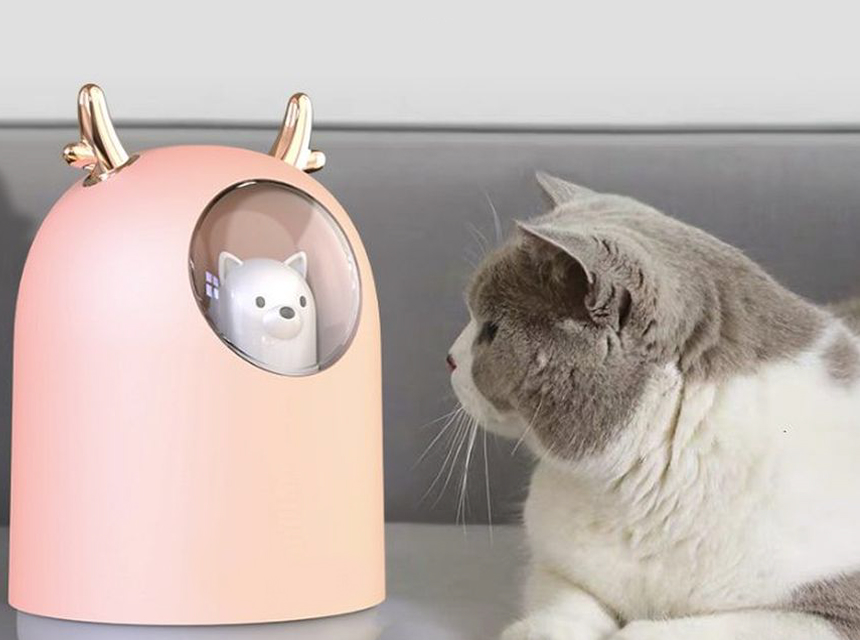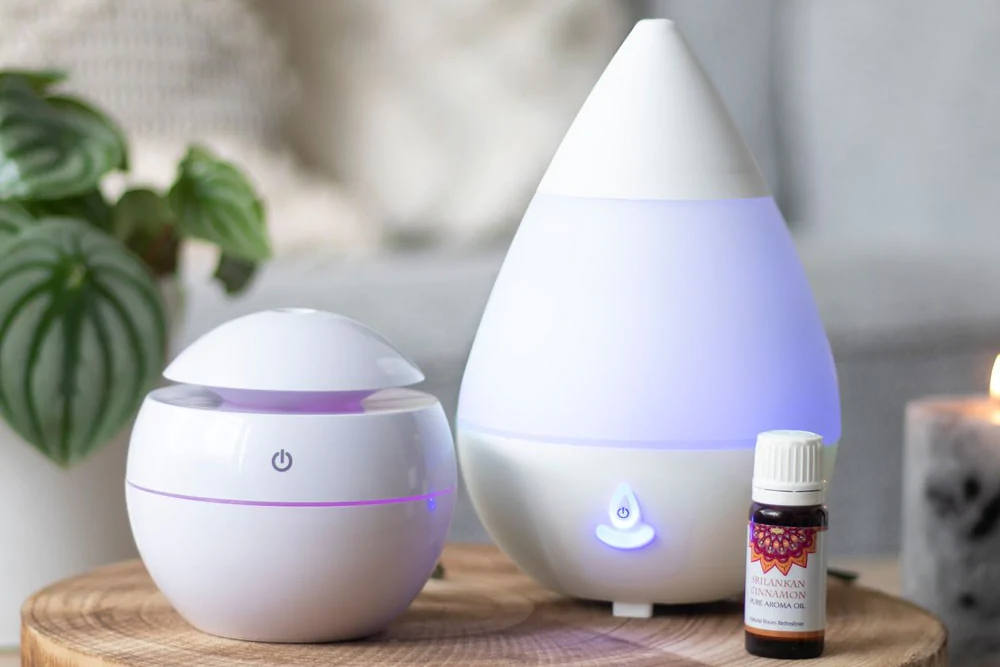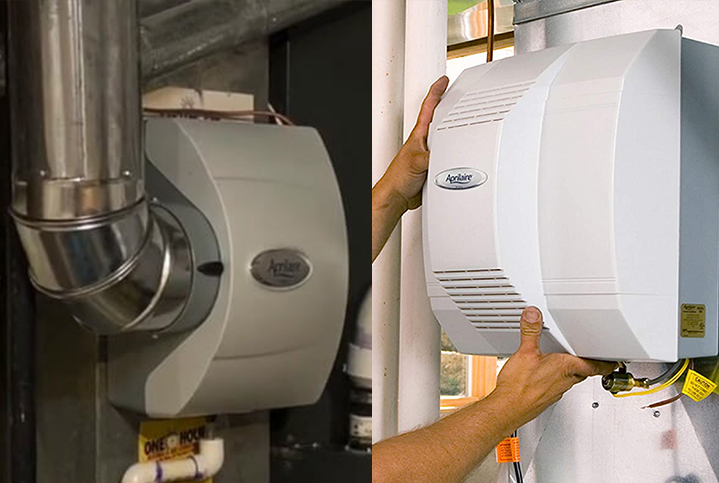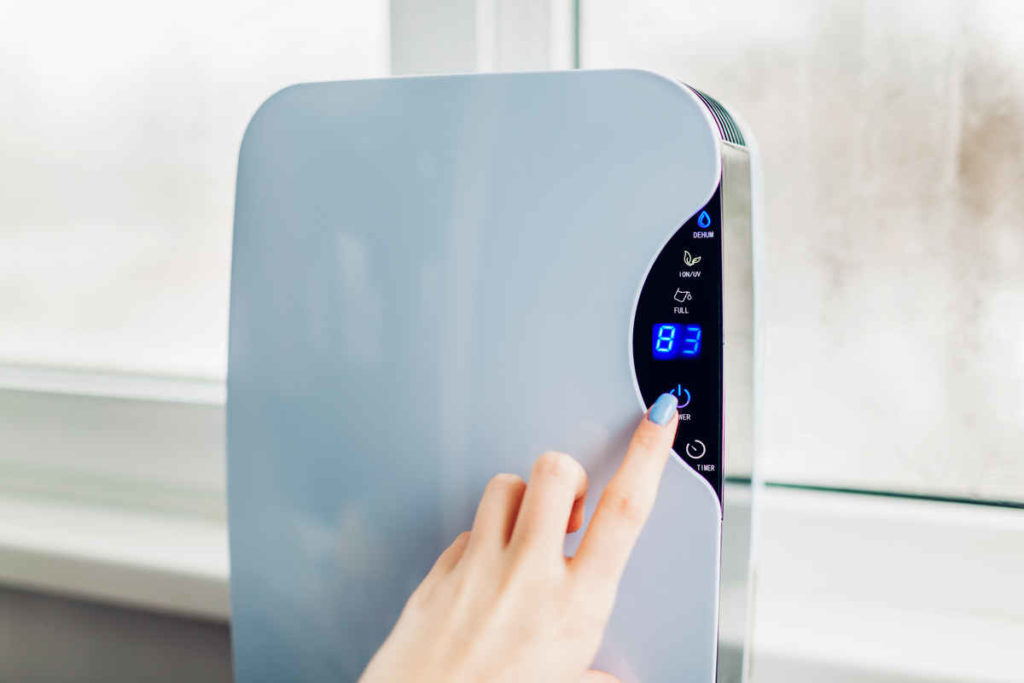

Do I need a humidifier? If you notice signs in your home that the air is too dry, then you definitely need one – the question is always how to know and what to do about it. The Environmental Protection Agency suggests that the humidity level of all homes should be between 30% and 60%.
Even if you know whether you need a humidifier or not, there’s a lot of confusing information on the internet concerning humidifiers and their functions. To make things easier for you, we would clear the air with our complete guide on everything you need to know about needing a humidifier.
If you want to measure humidity in your home, the best way to do this is by purchasing and using a hygrometer or humidity gauge. Similar to a thermometer, a hygrometer is used to measure the amount of moisture in the air, thereby leaving you with the humidity level of your home.
You can purchase a hygrometer easily from department or hardware stores, or also get a humidifier with a built-in hygrometer so that you regularly keep track of your humidity level.
Nowadays, hygrometers come with different digital functions that make them easy to use. They are very affordable and are known to be close to accurate. Many of them are also battery efficient.
Keep in mind that humidity levels vary depending on the season and where your home is, so don’t expect it to stay at a fixed number. Humidity is usually lower during winter months because of the cold, but higher when summer comes, so adjust your humidifier based on the changes.
The ideal humidity range for an indoor space like your home is between 30 and 50 percent. Anything too far from this, whether lower or higher, would make things uncomfortable for your home. 50% humidity is generally considered as the right level for everyone and so it’s a great choice to go for if you’re not sure what level to choose.
As these are general ranges, don’t focus on getting exactly 50% humidity as long as you’re very close to it. Anything way higher than 50% in your home would attract bacteria, mold, and dust mites, so balance is important.
If your humidity level Is below 30%, then it is considered too low and you need a humidifier. It means that the air in your home is too dry, which can cause dry skin, affect your nasal system, lead to itchy eyes and other uncomfortable symptoms.
Sometimes you don’t need a hygrometer to tell you that your air is dry, because your body and the items in your home would show you. If you notice some uncomfortable symptoms, that’s a sign that you need to purchase a humidifier quickly to clear the air.
Dry air affects your skin directly, and it usually takes a huge heat. If your humidity levels are low, you would experience very dry skin and cracked lips. You can also get skin problems like rashes and eczema. And, if you notice that the problem isn’t getting solved regardless of how many times you put moisturizer, lotion, and lip balm, then the air is too dry.
To solve this problem, you can start using a humidifier as this would add moisture to the air and then to your skin. Some humidifiers are marketed as products that would especially help out with dry skin and hair. You can also go for an office humidifier and place it on your desk if the environment there is dry.
Although you might have some respiratory symptoms when you have a cold or a fever, with very dry air, you might experience these symptoms every day. If you find yourself waking up in the middle of the night and finding it hard to breathe, feeling congested whenever you’re in your home, and you have irritated nasal passages, then you need a humidifier.
These symptoms can be caused by dry air making your nasal passages become dried out. If you feel sick, you can also go to the doctor and ask them if you only need a humidifier to solve the problem.
Another uncomfortable symptom of a home with low humidity is frequent nosebleeds. If you suddenly started getting nosebleeds for no explainable reason, especially if that never happened before, then you need a humidifier. The dry air irritates your nasal passages, which can make your nose bleed.
A humidifier would increase the level of moisture in your air, thus removing the irritation from your nasal passages and stopping the nose bleed. Keep in mind that you can also see a doctor ensure nothing else is causing your nose to bleed.
When the humidity level is too low, static electricity in any place would increase significantly. This is because the static changes are usually blocked by standard moisture levels, and with the absence of the latter, the former will increase.
Although static electricity seems like a small discomfort that would affect you once or twice when you’re around the house, it is potentially destructive. A charge up that goes as high as hundred volts can damage the electronics and appliances in your home, leading to extra repair or replacement costs. It can also lead to an electric accident. So, if you notice static electricity in your home, get a humidifier first.
People that have asthma or allergies are usually recommended to use a humidifier in the first place, so you can talk to your doctor about it. If you didn’t, chances are that your allergies or asthma can become worse because of the dry air. Those with allergies will experience constant coughing and sneezing, and problems sleeping because of the low humidity.
Increasing the humidity would make it easier for those who have asthma and allergies to breathe, especially when dealing with a respiratory problem. But, if your humidifier is dirty, then it would only make matters worse, so maintenance is key.
Another sign that lets you know the humidity situation in your home is the plants. Just like your skin, plants are also affected whenever the humidity level in your home is too low. Because of dry air, the soil would lose its moisture very quickly, which would lead to the leaves and the entire plant drying out.
Since plants find it difficult to grow in places where there is dry air, you can check the plants and see if they are dying whenever they are inside.
You might also have to worry about your pets whenever the humidity level is low, as they can experience all sorts of skin problems and respiratory symptoms like sneezing. Low humidity also causes wheezing, discomfort, and extreme thirst in pets, which you can solve by just getting a humidifier.
Some materials in your home can get damaged when you have a humidity level that is too low, or too high. Low humidity levels can lead to peeling wallpapers and warping wooden floors. It also causes your furniture to dry out and you might have to restore it. In some special places like a nursery or guitar room, a humidifier is especially important.
These problems would increase the maintenance costs spent around the home because you would have to replace and repair often. But if you buy a humidifier, or a dehumidifier if you’re experiencing mold and bacteria in your home, then you can save the money spent on constant repairs around the house.
There are different ways that humidifiers function to increase the humidity percentage of your room or home, but most products that you would find today either use warm mist or cool mist, which we would explore later on in this guide.
A humidifier works by changing liquid water to fine mist water vapor, and then this mist or steam is released into the space, which adds moisture to the air and increases the humidity level.
Whenever you first plug in a humidifier, you can expect it to cause immediate relief from the dry air and make you more comfortable in your home. Before you know it, you would feel an improvement as long as you purchase the right model, and see changes in your home over the next few days.
Keep in mind that your humidifier would not help if you don’t keep it clean. Having a dirty filter or reservoir in your device would lead to mold and bacteria, which can trigger flu-like symptoms to those with or without asthma and allergies. Instead of keeping the air moisturized, it would end up causing health problems, which is why it’s important to use your humidifier whenever it is clean.
Since there are different types of humidifiers, it’s usually difficult to choose the one that works best for you and your family, which is why you have to consider various factors. The main factors to consider are the types and size. Although they all come in different types, they can either be a standalone or a whole-house humidifier, so choose one based on the one that you want.
Apart from the size, you can also get a cool mist or warm mist humidifier, evaporative or ultrasonic humidifier, or a vaporizer. Some of these types differ based on the process by which they increase moisture in your home. Let’s take a closer look.
There are different types of humidifiers that you can go for, depending on the one that meets your needs. These humidifiers increase the moisture in the air in different ways, and it’s up to you to check whether its function works for you and your family or not.
The first type of humidifier is the cool mist, which separates itself from other types by not needing heat or warming water when creating vapor to increase moisture in the air. This also makes it more affordable. This type of humidifier works by spraying cold mist into the air, and this increases the humidity.
Cool mist humidifiers use less electricity than warm mist models because they don’t have to heat the air, and they can be used all year long because of their cool air. The best cool mist humidifiers are especially ideal for places with a warm climate or during the summer months. A cool-mist humidifier won’t be very helpful if you have a cold or congestion though.
Warm mist humidifiers produce heat and create heated water vapor which they release into the air, and it uses electricity. It stores water in the tank and passes it through a heating element which vaporizes it, and sends it into the air. You can also add scent pads and other similar items to your humidifier.
Keep in mind that warm mist humidifiers release warm vapor, which means that they would be making your room feel warmer. It’s especially helpful when you have a cold or congestion, or when the weather is cold, especially during winter. If you live in a warm climate, you might have to deal with more heat if you get this type of humidifier though.
An evaporative humidifier is another kind, which works by using a fan and wick filter to increase the moisture in the air. When you turn on the device, it would run a fan that blows air to the wick filter. This leads to the water evaporating, and the vapor or mist would be released into the room, leading to higher humidity levels.
Using an evaporative humidifier would lower the temperature of the room because it removes the surrounding heat in the air when it releases moisture. It also saves costs on electric bills unlike the warm mist models because it is energy efficient. But, the evaporative humidifier makes a noise when it operates.
The ultrasonic humidifier is often considered a type of cool mist humidifier, but it works differently. It is a recent design that uses high-frequency sound waves to create moisture in your room. The sound waves would vibrate the water at a high frequency, and this turns it into vapor. Then, the vapor is released into the air as moisture, and this would increase the humidity.
The ultrasonic humidifier does not use a standard filter but a demineralization cartridge, which is used to get rid of any mineral that resides in the water before it is turned to vapor. But some have complained of white residue on surfaces in the room where the humidifier is used.
Next is the vaporizer, sometimes called a steam vaporizer. It is one of the most affordable and smallest types of humidifiers, which you can purchase anywhere, even at your neighborhood drug store. It vaporizer works by first heating water using electricity and then cooling the vapor because it is released into the air. So even if it heats the water, you won’t get increased warmth like the warm mist vaporizer.
But, the vaporizer can cause burns if you touch the wrong place, so it isn’t ideal if you have a lot of people, especially kids and pets, moving around.
If you want to use a humidifier for the entire house and not just one room, you can do great with a whole-house humidifier. This type of humidifier is connected directly to the heat pump system or furnace in your house. They come with their water supply and are easy to use.
For most models, you only have to input the humidity level that you are going for, which is close to 50%, and turn it on. It would deliver the humidified air into our home through the HVAC system and requires little to no maintenance whatsoever.
When looking at the size of a humidifier, you can either have a console or whole house humidifier, or a personal, portable, or standalone humidifier. This depends on the space you want to humidify and if you want to carry the unit with you when you travel.
Console or whole house units increase the moisture in the air of the whole house. Although whole house units can be directly installed, console units are large but movable, and you can do so with the wheels that they usually come in. You can use the console unit for one room, and move it to the next room you’re in. When considering that you have to move it from room to room, directly installing a whole-house unit might seem like a better idea.
Then we have portable or personal humidifiers which have a small size and are great to carry when you’re on the move. You can use these humidifiers when you’re in your home office if you go to work, and if you’re traveling, so you never have to worry about dry air.
Standalone humidifiers usually cost less than whole-house units, but this is because their area of coverage is also small. If you want to increase moisture in your entire home, then you would need to use a whole-house unit, as portable units would not be cost-effective.
Also, portable humidifier requires more hands-on maintenance and attention than console or whole house units which can just be plugged in and left to increase moisture.
Although there’s a lot you can benefit from when you use a humidifier, there might also be some risks you have to keep in mind.
For one, burns are usually caused by humidifiers, especially when you have children. Don’t place warm mist humidifiers or vaporizers close to children as their exterior can cause burns.
Another risk is that of coughs and colds, which is caused when your humidifier is unclean, as we have mentioned briefly before. Vaporizers get dirty the fastest, but they are pretty easy to clean. Depending on the model that you have, you should check the manufacturer’s instructions and clean your humidifier regularly.
If your humidifier is giving off too much moisture, it can create condensation in corners and on the wall, leading to mold. This is another risk to keep in mind.
If the water in your humidifier is unclean, it can release microorganisms and minerals into the air, which would be a problem for those that have asthma. Use distilled water instead of normal water to prevent this.
A humidifier adds moisture to the air in a space, while a dehumidifier would remove moisture from the space, so you purchase either one based on your needs. If your humidity level is way higher than 50%, you need a dehumidifier to prevent the building up of mold and bacterial growth in your home. But, if the level is lower than 30%, you’re dealing with dry air and need a humidifier.
So the first thing to do is measure the humidity in your home and make the decision from there.
While a humidifier only adds moisture to the air, an air purifier is used to clean the air by removing pollutants. With air purifiers, the air in the room enters into the unit, the filter removes the pollutants, and then clean air is emitted back into the room. It does not affect the moisture in any way. These two units are similar in the fact that they help with asthma, allergies, dry air, respiratory irritation and sinus problems, colds, or the flu.
There are two main things to keep in mind when thinking of whether you need a humidifier or not. The first is whether the humidity percentage is lower than 30% based on what the hygrometer says, and the second is whether you experienced any of the symptoms we have explained in this guide.
If all the answers point to you needing a humidifier, you can then decide the type and size of humidifier that you need and purchase the best one, keeping all the possible risks in mind. You can make your home a more comfortable place to stay for yourself, your family, your pets, and even your plants, as long as the air is well humidified.





